
https://helpx.adobe.com/photoshop/using/using-tools.html
This is a quick summary of Photoshop’s Tools palette with a description of each tool’s functions and shortcuts. Great for those brand new to Photoshop.
The keyboard shortcut is in ( ).

Rectangular Marquee Tool (M)
Use this tool to make selections on your image, in a
rectangular shape. This changes the area of your image that is affected by other
tools or actions to be within the defined shape. Holding the [Shift] key while
dragging your selection, restricts the shape to a perfect square. Holding the
[Alt] key while dragging sets the center of the rectangle to where your cursor
started.
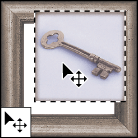
Move Tool (V)
Use this tool to, well, move things. Usually you use
it to move a Layer around after it has been placed. Hold the [Shift] key to
limit the movements to vertical/horizontal.
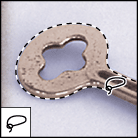
Lasso Tool (L)
Use this to draw selections in whatever shape you
would like. To close the selection, either click on the beginning point (you’ll
see the cursor change when you’re on it), or just double-click. When holding the
[Ctrl] key, you’ll see the cursor change, and the next time you click, it will
close your selection.
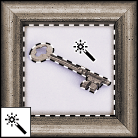
Magic Wand Tool (W)
Use this to select a color range. It will select the
block of color, or transparency, based on wherever you click. In the Options Bar
at the top, you can change the Tolerance to make your selections more/less
precise.
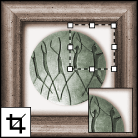
Crop Tool (C)
The Crop Tool works similarly to the Rectangular
Marquee tool (see above if you have no short-term memory). The difference is
when you press the [Enter/Return] key, it crops your image to the size of the
box. Any information that was on the outside of the box is now gone. Not
permanently, you can still undo.
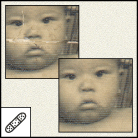
Healing Brush Tool (J)
This is a really useful tool. Mildly advanced. You can
use this tool to repair scratches and specs and stuff like that on images. It
works like the Brush tool (see below). You choose your cursor size, then holding
the [Alt] key, you select a nice/clean area of your image. Let go of the [Alt]
key and paint over the bad area. It basically copies the info from the first
area to the second, in the form of the Brush tool. Only, at the end, it averages
the information, so it blends.
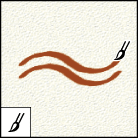
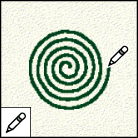
Brush Tool (B)
This is one of the first tools ever. It’s what
Photoshop is based off of. Well, not really, but it’s pretty basic. It paints
one your image, in whatever color you have selected, and whatever size you have
selected.
The pencil tool
paints hard-edged strokes.


Clone Stamp Tool (S)
This is very similar to the Healing Brush Tool (see
above). You use it the exact same way, except this tool doesn’t blend at the
end. It’s a direct copy of the information from the first selected area to the
second.
The pattern stamp
tool * paints with part of an image as a pattern.
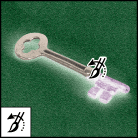

History Brush Tool (H)
This tool works just like the Brush Tool (see above)
except the information that it paints with is from the original state of your
image. If you go Window>History, you can see the History Palette. The History
Brush tool paints with the information from whatever History state is selected.
The art history brush
tool * paints with stylized strokes that simulate the
look of different paint styles, using a selected state or
snapshot.

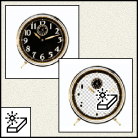

Eraser Tool (E)
This is the anti-Brush tool. It works like an eraser
(duh) and erases whatever information wherever you click and drag it. If you’re
on a Layer, it will erase the information transparent. If you are on the
background layer, it erases with whatever secondary color you have selected.
The magic eraser tool
erases solid-colored areas to transparency with a single click.
The background eraser
tool * erases areas to transparency by dragging.
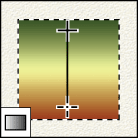

Gradient Tool (G)
You can use this to make a gradiation of colors.
Gradiation doesn’t appear to be a word, but it makes sense anyway. It creates a
blending of your foreground color and background color when you click and drag
it. Like a gradient.
The paint bucket tool
fills similarly colored areas with the foreground color.
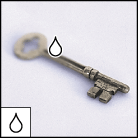
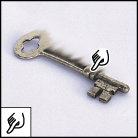
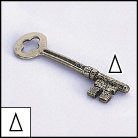
Blur Tool (R)
The Blur tool is cool. It makes things blurry. Click
and drag to make things blurry. The more you click and drag, the blurrier things
get.
The smudge tool
smudges data in an image. The sharpen tool
sharpens soft edges in an image.

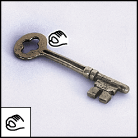
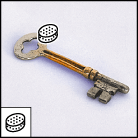
Dodge Tool (O)
It’s used to lighten whatever area you use it on. As
long as it is not absolute black. Absolute black won’t lighten.
The burn tool
darkens areas in an image.
The sponge tool
changes the color saturation of an area.
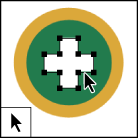
Path Selection Tool (A)
You use this tool when working with paths. Since this
is all about the basics, I won’t go into details. It’s related to the Pen Tool
(see below) though.


Horizontal Type Tool (T)
It makes type. Or text. Or whatever you want to call
it. You can click a single point, and start typing right away. Or you can click
and drag to make a bounding box of where your text/type goes.
The type mask tools *
create a selection in the shape of type.
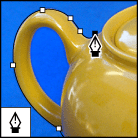
Pen Tool (P)
I mentioned this tool above. It’s for creating paths,
in which you would use the Path Selection Tool to select the path. Paths can be
used in a few different ways, mostly to create clipping paths, or to create
selections. You use the tool by clicking to add a point. If you click and drag,
it will change the shape of your path, allowing you to bend and shape the path
for accurate selections and such.

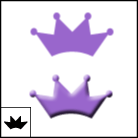
Rectangle Tool (U)
By default it draws a Shape Layer in the form of a
rectangle. It fills the rectangle with whatever foreground color you have
selected. It’s pretty complicated, don’t hurt yourself with this one.
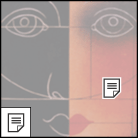
Notes Tool (N)
Like post-it notes, but digital. You can use this tool
to add small little note boxes to your image. These are useful if you’re very
forgetful or if you’re sharing your Photoshop file with someone else. I’m pretty
sure it only works with .PSD files.
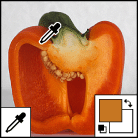
Eyedropper Tool (I)
This tool works by changing your foreground color to
whatever color you click on. Holding the [Alt] key will change your background
color.

Hand Tool (T)
You can really make short work of your job with the
Hand Tool. It’s for moving your entire image within a window. So if you’re
zoomed in and your image area is larger than the window, you can use the Hand
Tool to navigate around your image. Just click and drag. You can get to this
tool at any time when using any other tool by pressing and holding the
[Spacebar].

Zoom Tool (Z)
Pretty obvious what this tool does. It allows you to
zoom into your image. Don’t be dumb, it doesn’t actually change the size of your
image. Hold the [Alt] key to zoom out. Holding the [Shift] key will zoom all of
the windows you have open at the same time. Double-click on the Zoom Tool in the
palette to go back to 100% view.

BONUS!!
These are your color boxes. Foreground (in the front)
and Background (in the back). Click on either one to bring up the color select
dialog box.